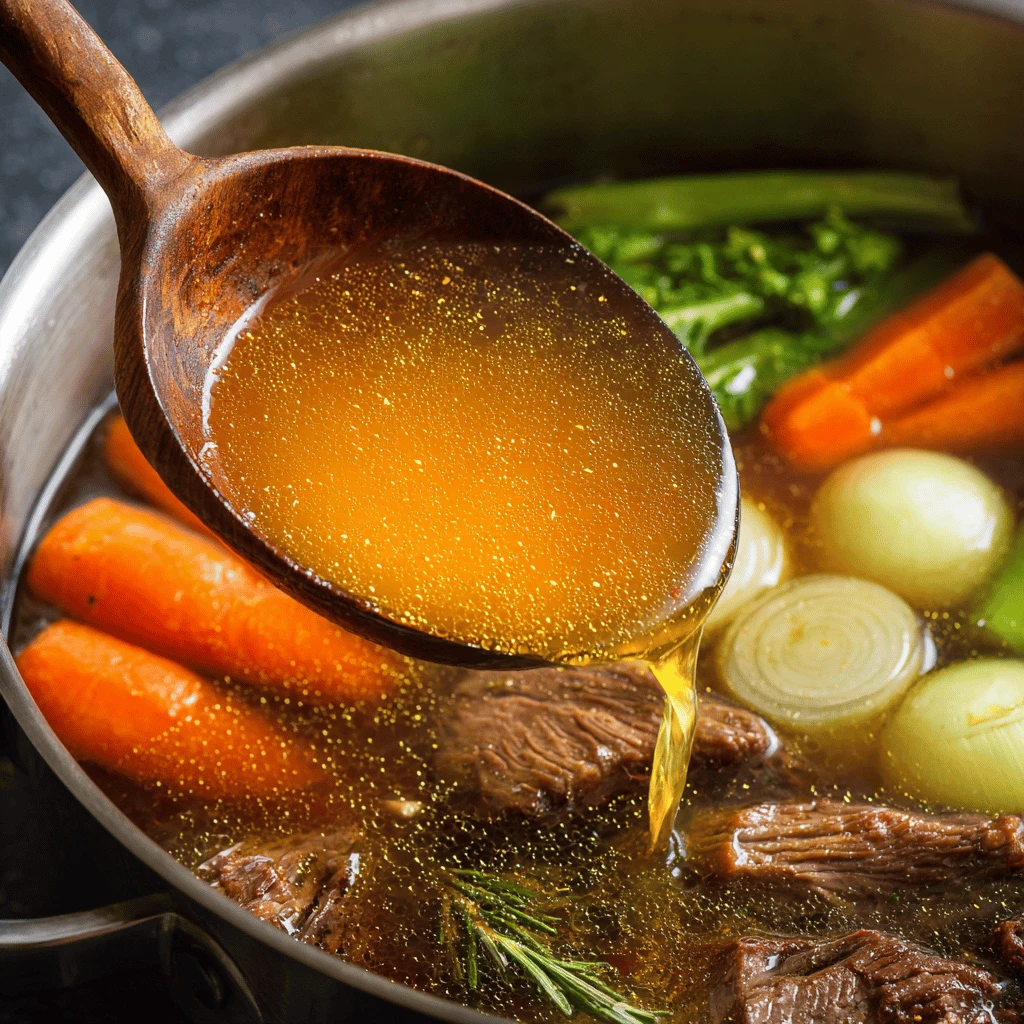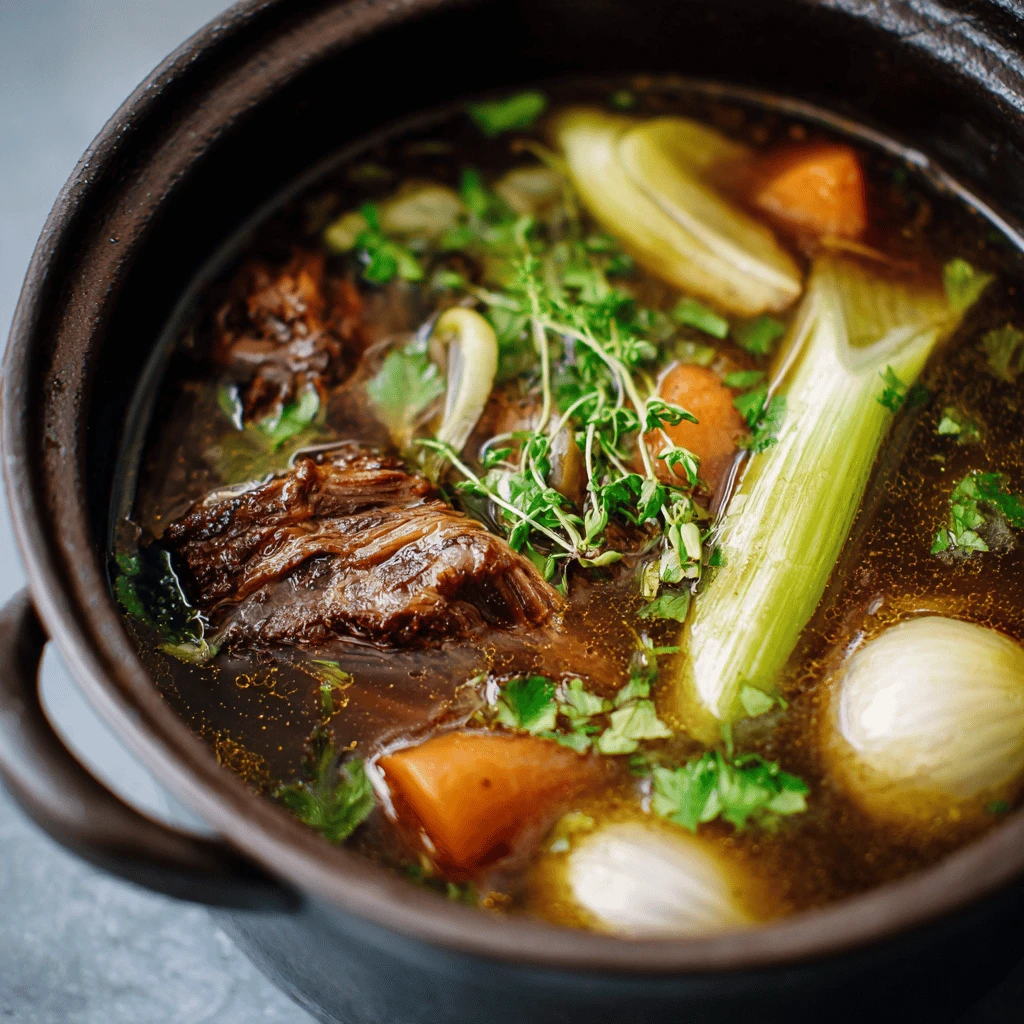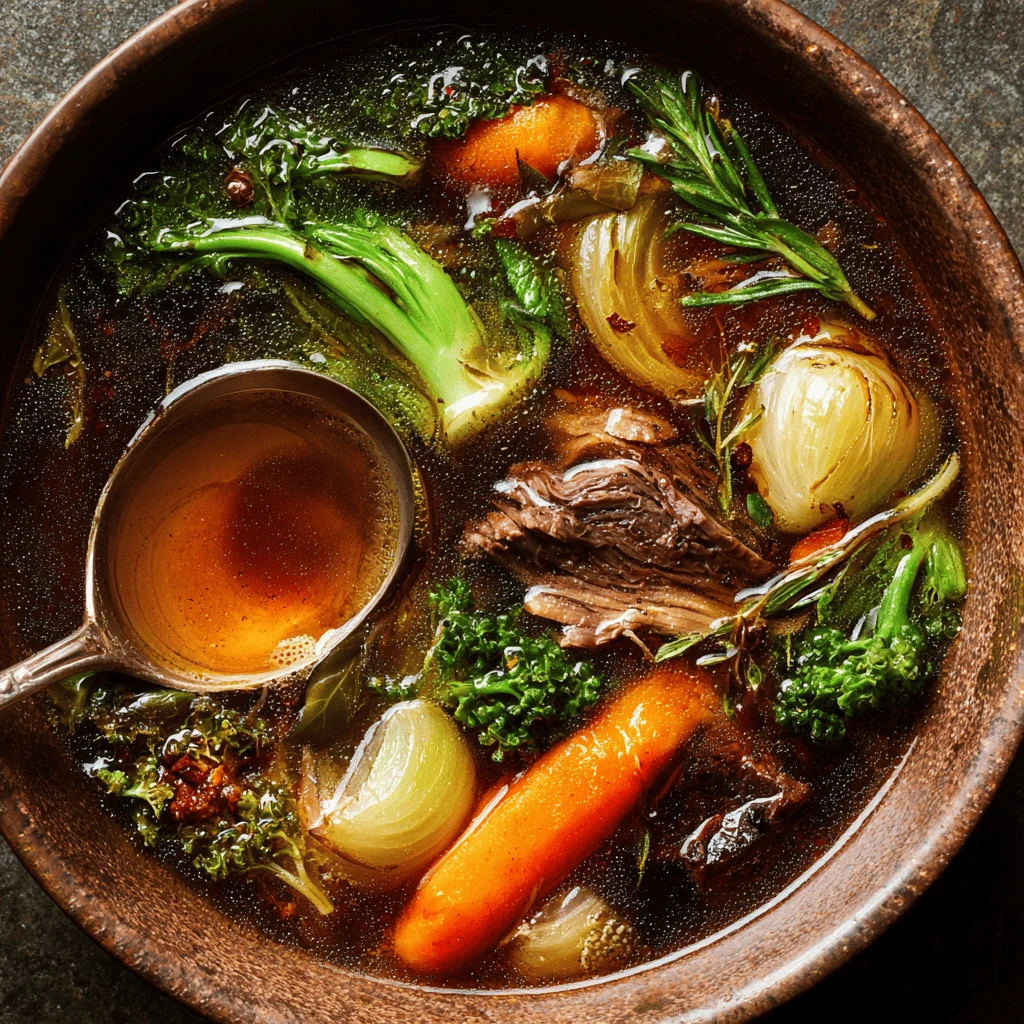Slow Cooker Beef Broth: The Ultimate Guide to Rich, Flavorful Stock
Why Make Beef Broth in a Slow Cooker?
Homemade beef broth elevates your cooking to a new level. It’s far superior to store-bought versions, which often contain additives and lack depth of flavor. A slow cooker is the perfect tool for extracting maximum richness from beef bones and vegetables, resulting in a broth that’s both nutritious and incredibly delicious. The low and slow cooking process gently coaxes out all the flavorful compounds, collagen, and minerals, creating a broth that’s ideal for soups, stews, sauces, and more. Furthermore, using a slow cooker for beef broth is incredibly hands-off, freeing you up to tackle other tasks while your kitchen fills with an enticing aroma.
Ingredients for the Perfect Slow Cooker Beef Broth
The key to a truly exceptional beef broth lies in the quality of the ingredients. Here’s what you’ll need:
- Beef Bones: 3-4 pounds of beef bones, preferably a mix of marrow bones, knuckle bones, and meaty bones. Marrow bones release rich, fatty flavor, while knuckle bones contribute collagen, which gives the broth a desirable gelatinous texture. Roasting the bones beforehand deepens the flavor profile considerably.
- Aromatics: 2 large onions, roughly chopped; 3-4 carrots, roughly chopped; 3-4 celery stalks, roughly chopped; 4-6 cloves of garlic, crushed. These vegetables form the flavor base of your broth. Don’t be afraid to use the ends and scraps of vegetables you might otherwise discard.
- Herbs and Spices: 1-2 bay leaves; 1 tablespoon whole black peppercorns; 1 teaspoon dried thyme (optional); 1/2 teaspoon dried rosemary (optional); A small bunch of parsley stems (optional). These enhance the overall flavor and aroma of the broth.
- Vinegar (Optional): 1-2 tablespoons of apple cider vinegar or white vinegar. This helps to draw out the minerals from the bones.
- Water: Enough to cover the bones and vegetables completely.
Sourcing Your Ingredients
Quality is paramount. Seek out grass-fed beef bones from a reputable butcher or farmer’s market. These bones tend to yield a richer and more nutritious broth. Opt for organic vegetables whenever possible to avoid unwanted pesticides. Don’t skimp on the aromatics; they’re essential for building a complex flavor profile.
Ingredient Preparation Tips
- Roasting the Bones: Preheat your oven to 400°F (200°C). Spread the beef bones on a baking sheet and roast for 30-45 minutes, or until deeply browned. This step is crucial for developing a rich, savory flavor.
- Chopping the Vegetables: Roughly chop the onions, carrots, and celery. There’s no need for precision, as they’ll be strained out later.
- Crushing the Garlic: Crushing the garlic releases its flavor more effectively.
Step-by-Step Instructions for Slow Cooker Beef Broth
Making beef broth in a slow cooker is a simple process, but patience is key. Here’s a detailed guide:
1. Roast the Bones (Optional but Recommended): Preheat your oven to 400°F (200°C). Spread the beef bones on a baking sheet and roast for 30-45 minutes, flipping halfway through, until deeply browned.
2. Combine Ingredients in the Slow Cooker: Place the roasted bones (or raw bones if you skip the roasting step) in the slow cooker. Add the chopped onions, carrots, celery, crushed garlic, bay leaves, peppercorns, and any other herbs or spices you’re using. If using, add the vinegar.
3. Add Water: Pour enough cold water into the slow cooker to completely cover the bones and vegetables. Leave about an inch of space at the top.
4. Slow Cook: Cover the slow cooker and cook on low for 12-24 hours. The longer it simmers, the richer and more flavorful the broth will be.
5. Strain the Broth: Once the broth is finished cooking, let it cool slightly. Place a fine-mesh sieve lined with cheesecloth over a large bowl. Carefully pour the broth through the sieve, discarding the solids.
6. Cool and Store: Let the broth cool completely. As it cools, the fat will rise to the surface. You can skim off this fat if desired, or leave it for added richness. Store the broth in airtight containers in the refrigerator for up to 5-7 days, or in the freezer for up to 3 months.
Tips for Success
- Don’t overcrowd the slow cooker. Use a larger slow cooker if necessary to ensure that the bones and vegetables are fully submerged in water.
- Avoid boiling. The goal is to simmer the broth gently, not to boil it. Boiling can result in a cloudy broth.
- Skim off impurities. During the first few hours of cooking, some foam and impurities may rise to the surface. Skim these off with a spoon to ensure a cleaner-tasting broth.
- Don’t add salt. It’s best to season the broth to taste when you use it in a recipe.
Using Your Homemade Beef Broth
Now that you have a batch of homemade beef broth, the possibilities are endless! Here are some ideas:
- Soups and Stews: Use it as the base for your favorite soups and stews. It adds incredible depth of flavor to dishes like French onion soup, beef stew, and vegetable soup.
- Sauces and Gravies: Use it to create rich and flavorful sauces and gravies. It’s especially delicious in a red wine reduction sauce for steak or a classic gravy for roast beef.
- Braising: Braise meats in beef broth for a tender and flavorful result. Short ribs, pot roast, and lamb shanks are all excellent choices.
- Risotto: Use it instead of water to cook risotto for a creamy and flavorful dish.
- Deglazing Pans: Use it to deglaze pans after sautéing meats or vegetables. The broth will pick up all the delicious browned bits from the bottom of the pan, creating a flavorful sauce.
- Drinking Broth: Warm a cup of broth and add a squeeze of lemon juice for a comforting and nourishing beverage.
Enhancing the Flavor
- Add a splash of sherry or Madeira to your broth for extra depth and complexity.
- Infuse the broth with herbs by adding a cheesecloth sachet filled with fresh herbs like thyme, rosemary, or sage during the last hour of cooking.
- Add a piece of Parmesan rind to the broth for a savory umami flavor.
Troubleshooting Common Beef Broth Issues
Even with the best intentions, sometimes things don’t go according to plan. Here’s how to troubleshoot some common beef broth issues:
- Broth is Cloudy: Cloudy broth can be caused by boiling or overcooking. To avoid this, make sure to simmer the broth gently and avoid stirring it unnecessarily. Roasting the bones first can also help.
- Broth is Bland: Bland broth can be caused by using too little of the ingredients, not roasting the bones, or not simmering it long enough. Make sure to use a generous amount of bones and vegetables, roast the bones for optimal flavor, and simmer the broth for at least 12 hours.
- Broth is Bitter: Bitter broth can be caused by overcooking certain vegetables, such as carrots. Remove any vegetables after about 12 hours.
- Broth is Too Fatty: While some fat is desirable, too much can make the broth greasy. Skim off the excess fat after the broth has cooled.
- Broth is Sour: Sour broth is usually caused by using spoiled ingredients. Make sure all ingredients are fresh before starting.
Frequently Asked Questions (FAQ)
Q: Can I use frozen beef bones?
A: Yes, you can use frozen beef bones. Just make sure to thaw them before roasting (if roasting) or adding them to the slow cooker.
Q: Do I have to roast the bones?
A: Roasting the bones is highly recommended, as it significantly enhances the flavor of the broth. However, if you’re short on time, you can skip this step. The broth will still be flavorful, but it won’t be as rich and complex.
Q: Can I add other vegetables?
A: Yes, you can add other vegetables to your broth. Some good options include leeks, parsnips, and mushrooms. Avoid cruciferous vegetables like broccoli and cabbage, as they can make the broth bitter.
Q: How long does homemade beef broth last?
A: Homemade beef broth will last for 5-7 days in the refrigerator or up to 3 months in the freezer.
Q: Can I make beef broth on the stovetop?
A: Yes, you can make beef broth on the stovetop. Follow the same steps as above, but simmer the broth in a large pot over low heat for 3-4 hours. Be sure to monitor it closely and add water as needed.
Q: What’s the difference between beef broth and beef stock?
A: While the terms are often used interchangeably, beef broth is typically made with more meat, while beef stock is made with more bones. Beef stock also tends to be richer and more gelatinous than beef broth.
Q: How do I skim the fat off the broth?
A: The easiest way to skim the fat off the broth is to chill it in the refrigerator. The fat will solidify on the surface, making it easy to remove with a spoon.
Q: What if I don’t have a slow cooker?
A: You can use a large, heavy-bottomed pot on the stovetop. Keep the heat very low, and simmer for at least 4 hours, or longer if possible. Check the water level periodically.




